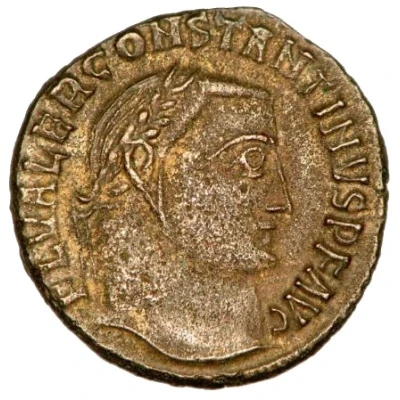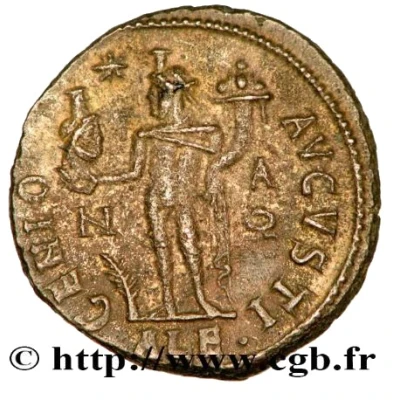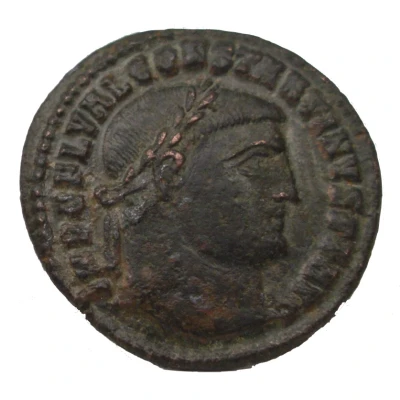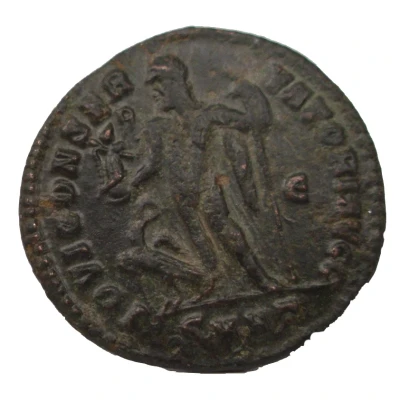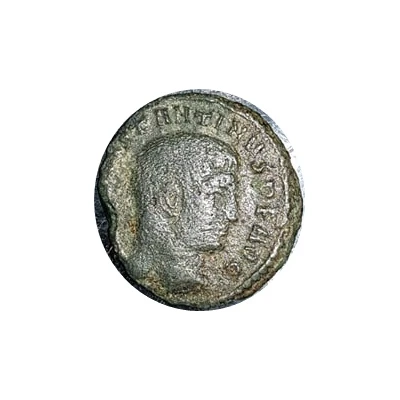
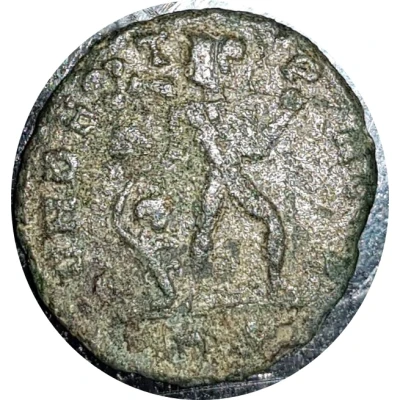

© SpuDy
Nummus - Constantinus I FVNDAT PACIS; Rome
313 year| Bronze | - | 15 mm |
| Issuer | Rome › Roman Empire (27 BC - 395 AD) |
|---|---|
| Emperor | Constantine I (Flavius Valerius Constantinus) (306-337) |
| Type | Standard circulation coin |
| Year | 313 |
| Value | Nummus (1⁄7200) |
| Currency | Solidus, Reform of Constantine (AD 310/324 – 395) |
| Composition | Bronze |
| Diameter | 15 mm |
| Thickness | 1 mm |
| Shape | Round (irregular) |
| Technique | Hammered |
| Orientation | Medal alignment ↑↑ |
| Demonetized | Yes |
| Updated | 2024-10-05 |
| Numista | N#285306 |
|---|---|
| Rarity index | 95% |
Reverse
Mars helmeted, advancing right, head to left, nude with chlamys flying over left shoulder, trophy across left shoulder, dragging a captive by hair.
Script: Latin
Lettering:
FVNDAT PACIS
R P
Translation: Founder of peace.
Edge
Plain
Comment
In A.D. 313, a set of three fractional coins was issued from Rome and Trier for both Constantine and Licinius. These small coins were probably distributed to the citizens as part of the Imperial largesse. A few things may have possibly been referenced by these coins, but they obviously commemorated peace in the Empire. This time of peace was the culmination of many events—Constantine defeated Maxentius, Licinius defeated Maximinus, Constantine’s sister married Licinius and cemented peace between the two rulers, and in A.D. 313, Constantine and Licinius signed the Edict of Milan.Interesting fact
One interesting fact about the Nummus - Constantinus I (FVNDAT PACIS; Rome) (313) coin is that it features the first Christian symbol, the Chi-Rho, on its reverse side. The Chi-Rho is a combination of the first two letters of the Greek word "Christos" (Χριστός), which means "Christ." This symbol was used by Emperor Constantine I, who ruled from 306 to 337 AD, as a symbol of his conversion to Christianity and to promote the spread of the religion throughout the Roman Empire.
